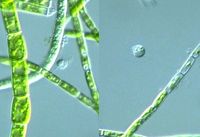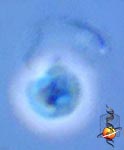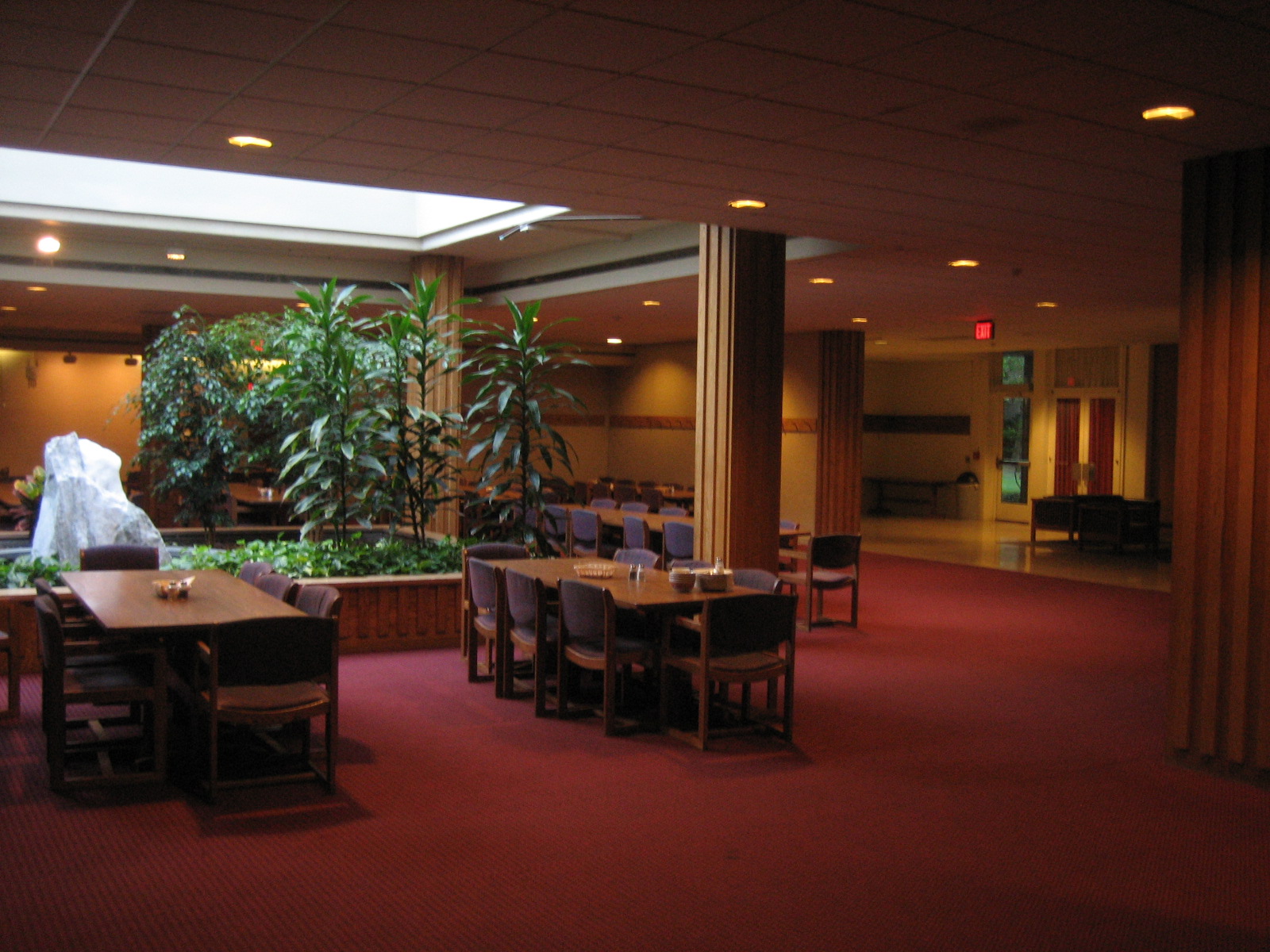Cafeteria (bicosoecid)
Cafeteria is a genus of unicellular flagellates living in the sea within the Stramenopilen. They are small, bacteria -eating ( bacterivorous ) unicellular.
- 6.1 Notes and references
Features
The small, colorless cells are bean- shaped and about three to ten microns long. They have no cell wall, neither cell wall or pellicle. The two scourges put on underneath the tip ( subapical ), often within an eye-catching bag, over which hangs a lip-like structure. The front sitting scourge has mostly straight forward, the back to back. Seated on a solid surface ( sessile ) cells rest on the top of the rear scourge. The anterior flagellum is used in this case to generate schraubige movements by a stream of water to the cell body down. This behavior is characteristic for the group of Bicosoecida.
Ultrastructure
As with the other representatives of Stramenopilen the anterior flagellum bears two rows of three-part Mastigonemen. Cafeteria is characterized by three terminal fibrils, wherein the average is greater than the lateral. The cells have a cell nucleus. The only Golgi apparatus sitting in front of the core near the Scourge base. There are around five sausage-shaped mitochondria present. Typical of the mitochondria have tubular cristae Stramenopile.
The cells have ejectiles organelles called Extrusomen. They are distributed in a characteristic pattern on the cell surface, especially close to the cell mouth ( cytostome ). The cytoskeleton is based on an asymmetric system consisting of the two flagella bases, three microtubule roots and a forked Rhizoplast. One of the three microtubule roots is at the front of the basal body and is associated with the secondary - microtubule cytoskeleton. This is a common feature of Stramenopilen. The other two microtubule roots are attached to the posterior basal body. The distal ends of the two rear roots do not overlap. The wider of the two roots has twelve microtubules and is distally divided into three subunits. These three subunits define the cell mouth ( cytostome ). This is displaced in the axis of the cell to the right.
Propagation
Cafeteria multiplies by simple cell division. Sexual reproduction is unknown, nor is time stages such as cysts.
Nutrition
The species are, so far as known to date, obligate phagotroph and feed on bacteria and small eukaryotes.
Dissemination
The four species are widely distributed in marine plankton and on many surfaces in the sea. On the surface they adhere to - typical of the Bicosoecida - with the rear Scourge. Cafeteria roenbergensis is one of the most common and widespread species of heterotrophic nanoplankton. It occurs worldwide in sea water from the surface ocean to the deep sea front in freshwater genus is so far not known.
System
The genus belongs to a small group within the Bicosoecida Stramenopilen. There are several species of which only a portion are described. The only detail known is roenbergensis cafeteria.
- Cafeteria roenbergensis
- Cafeteria minuta
- Cafeteria marsupialis
- Cafeteria ligulifera
- Cafeteria mylnikovii
In addition, following previously undescribed cultures are known:
- Cafeteria sp. CAFSW0510
- Cafeteria sp. EPM1
- Cafeteria sp. EWM2
- Cafeteria sp. GOT180
- Cafeteria sp. RCC1071
- Cafeteria sp. RCC970
Swell
- Charles J. O'Kelly: cafeteria. April 12, 2004, accessed on 1 March 2013.









